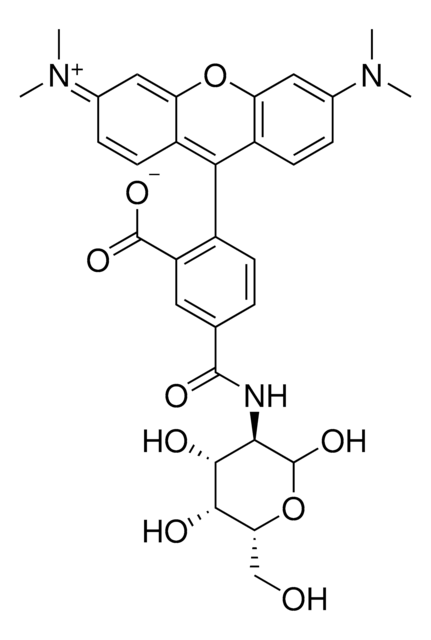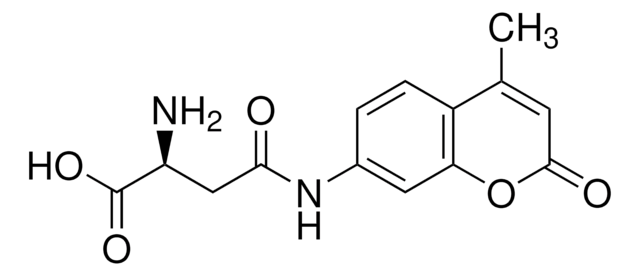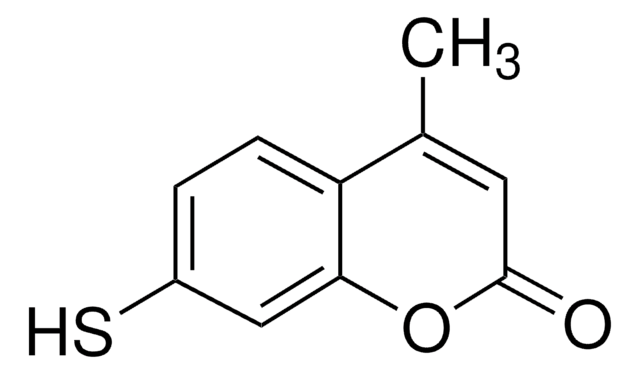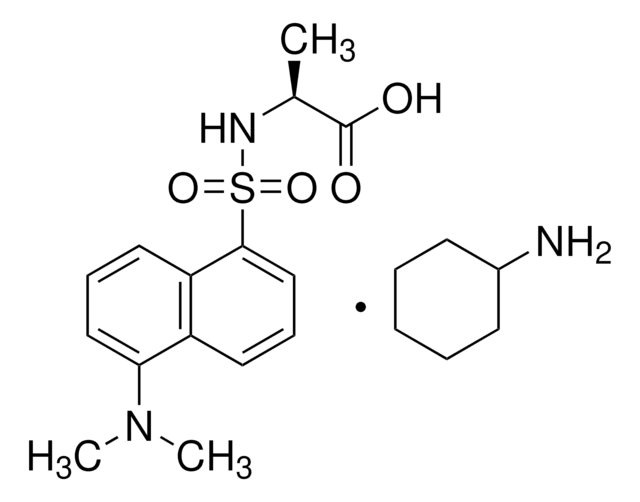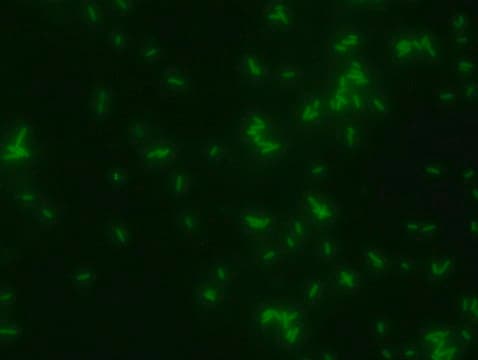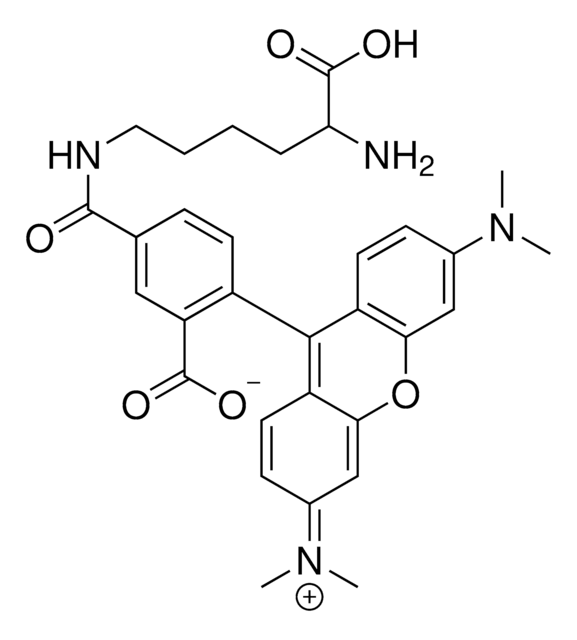SBR00070
Coumarin Labeled D-Lysine
Suitable for fluorescent microbial imaging
Synonim(y):
D-Lysine blue, D-Lysine, N6-[(7-hydroxy-2-oxo-2H-1-benzopyran-3-yl)carbonyl]- (ACI), FDAA
About This Item
Polecane produkty
Poziom jakości
Postać
solid
temp. przechowywania
−20°C
ciąg SMILES
O=C(NCCCC[C@@H](N)C(O)=O)C1=CC2=CC=C(O)C=C2OC1=O
InChI
1S/C16H18N2O6/c17-12(15(21)22)3-1-2-6-18-14(20)11-7-9-4-5-10(19)8-13(9)24-16(11)23/h4-5,7-8,12,19H,1-3,6,17H2,(H,18,20)(H,21,22)/t12-/m1/s1
Klucz InChI
QYOUXTJCRWPQLR-GFCCVEGCSA-N
Opis ogólny
Zastosowanie
- Bacterial cell wall morphology
- Bacterial cell wall formation or remodeling activity
- Bacterial viability/activity
- Identify bacterial activity on surfaces or in substances
- Differentiation between various bacterial strains according to their incorporation profile of different D amino acids and sugars
Komentarz do analizy
- Fluorescent microscopyapplication: Coumarin Labeled D-lysine has excitation/emission wavelength rangeat 360/450 nm.
- The recommended working concentrationin fluorescent microscopy imaging application is between 250µM-500 µM inworking medium
- Aliquots of the DMSO solution can bestored at -20 ⁰C, protected from light for at least one month.
produkt powiązany
Kod klasy składowania
11 - Combustible Solids
Klasa zagrożenia wodnego (WGK)
WGK 3
Temperatura zapłonu (°F)
Not applicable
Temperatura zapłonu (°C)
Not applicable
Certyfikaty analizy (CoA)
Poszukaj Certyfikaty analizy (CoA), wpisując numer partii/serii produktów. Numery serii i partii można znaleźć na etykiecie produktu po słowach „seria” lub „partia”.
Masz już ten produkt?
Dokumenty związane z niedawno zakupionymi produktami zostały zamieszczone w Bibliotece dokumentów.
Nasz zespół naukowców ma doświadczenie we wszystkich obszarach badań, w tym w naukach przyrodniczych, materiałoznawstwie, syntezie chemicznej, chromatografii, analityce i wielu innych dziedzinach.
Skontaktuj się z zespołem ds. pomocy technicznej
